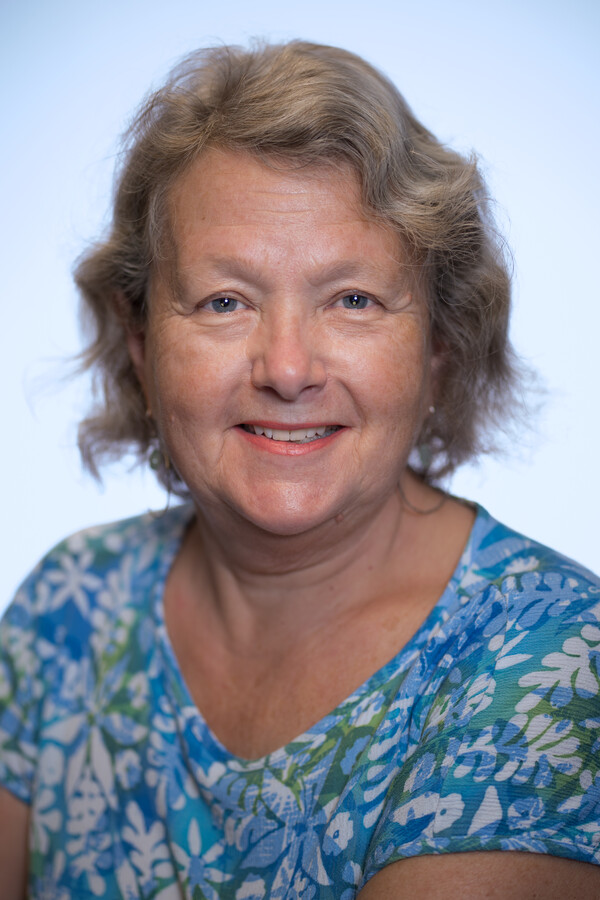
Born, raised and educated (McGill) in lovely Montreal, Barb completed her PhD (’82) in Ross Inman’s lab at the University of Wisconsin-Madison where she studied bacteriophage DNA replication and transcription. She continued her studies on DNA replication as a post-doc with Nobel Laureate Arthur Kornberg at Stanford. Barb initially worked on E. coli chromosome replication, but soon became interested in how chromosomes faithfully segregate. Barb made the keen insight that plasmids and their partitioning systems are far more convenient and experimentally tractable than their chromosomal counterparts.
After publishing multiple papers with Kornberg, including twice in Cell, Barb earned an independent scientist position at the NIH. There, she published several important single-author papers, including one in PNAS that demonstrated that a nucleoid-associated protein (IHF) was critical for the binding of a key partitioning protein (ParB) to the parS site on the plasmid, which is the functional equivalent of a eukaryotic centromere.
In looking for a faculty position, she was especially attracted to Toronto because, as she puts it, ‘it was a multicultural city with tons of activity, exotic restaurants, and so much music… and of course, my prospective colleagues just seemed like the right fit for me’. She joined our department as an Assistant Professor in 1990 and was known as one of the three amigos of the MSB core, together with contemporary hires Brenda Andrews and Andrew Spence.
Barb’s nascent lab was one of a select few that could purify all components of a bacterial DNA segregation system with high yields. With these biochemical tools in hand, her group published a string of 10 papers in EMBO, JBC, and J Bact that described how ParB assembles onto the parS site, how the ParA ATPase associates with this ParB-parS complex, and how ATP-hydrolysis by ParA influences this association. In 2005, Barb published a two-author Nature paper together with Maria Schumacher (Duke) on the ParB structure that revealed a novel mode of DNA binding. Similarly, Barb published the structure of ParA with collaborators four years later in EMBO.
Together with collaborator Kiyoshi Mizuuchi (NIH) and trainees Hwang and Vecchiarelli, Barb moved into studying partitioning in cell-free microfluidic systems. Their work, published in Mol Micro, EMBO and PNAS fundamentally changed our understanding of the mechanisms governing DNA segregation in bacteria. While eukaryotic cells use a mitotic spindle to segregate DNA, bacteria use protein gradients that pull replicated DNA apart to opposing cell halves prior to division to ensure faithful inheritance. Barb’s scientific journey from the characterization of single proteins to a full in vitro reconstitution of the system represents a level of understanding and achievement that all of us aspire to but so few of us realize.
Barb’s student Anthony Vecchiarelli won our department’s ‘Best PhD Thesis’ Vivash Award in 2010. In an interview sometime later ,Vecchiarelli recounts how Barb inspired his love of science, ‘My (undergraduate) fourth year project with Dr. Barbara Funnell in the department was, ultimately, what sealed the deal for me. She was incredibly patient in teaching me how to work at the bench and was instrumental in building the foundation of scientific skills that I have now.’ Barb’s kindness and passion for plasmid biology made her very popular with undergraduate students as well, training over 40 undergraduate project students on how to do science in a real lab. Remarkably, almost half of Barb’s graduate students and post-docs landed university faculty positions.
We have all benefited from Barb’s service to our community. In addition to being on multiple University and Faculty-level committees, she served as undergraduate coordinator for our department for over a decade and served on our executive committee as Vice or Associate Chair for another decade to ensure continuity through three different Chairpersonships (Lipshitz, Cowen and Hughes). Beyond our campus, Barb was President of the International Society for Plasmid Biology, has been on the editorial board of multiple journals, including Plasmid and the Journal of Bacteriology, and served on grant panels too numerous to mention.
Barb - we thank you for all that you have given us and congratulate you on such an admirable career. We hope that the next phase of your life will be filled with joy as you continue your travels with Tim into the world beyond Toronto.